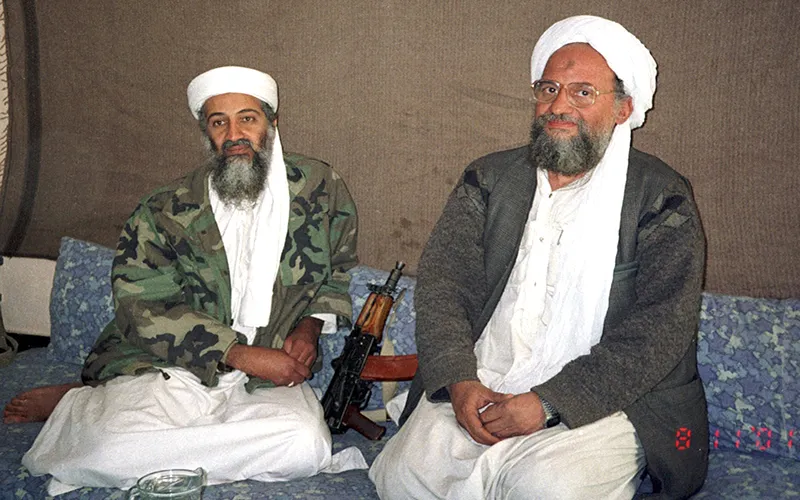Asim Umar, appointed as the commander of Qaedat al-Jihad in the Indian Subcontinent (QJIS) in August this year, has emerged as a new actor in the global jihadist stage. Little is known about the leader of the new Al Qaeda affiliate, but it would be useful to draw a profile from his educational background, his association with different terrorist groups, his social network and his views expressed in many videos available for examination.
Asim Umar is known for his oratory skills and his grasp of the jihadi literature. He began his jihadi career by translating the jihadi literature from Pashto to Urdu and subsequently wrote at least four books promoting jihad. He has articulated his Salafi views on many videos which are posted as a propaganda and recruitment tool by al Qaeda. In recognition of his extreme views on Sharia and Caliphate, al Qaeda had appointed him as the head of Sharia Committee.
So far, there is no public knowledge about Umar's combat skills and experience. There are, however, references of his travel to Afghanistan and becoming part of Harkat-ul Jihad al Islami (HuJI), a transnational terrorist group launched by three Pakistani mujahideen cadres in the early days of Afghan Jihad. Many al Qaeda and Taliban leaders sharpened their skills in the years spent with HuJI. HuJI remains a close ally of al Qaeda with presence in Pakistan, Afghanistan and Bangladesh.
It is his ideological orientation and oratory skills which have brought him closer to the al Qaeda leadership. Of the several video messages by Umar, three are significant. The first one was released in September 2012, on the 11th anniversary of 9/11 attacks. The fact of Asim Umar being featured in this video showed his growing stature within the terrorist group. The second video of November 2012 video showed him extolling the virtues of Sharia rule, the history of Sharia in the Indian sub-continent.
The most significant was the July 2013 video titled ''Why is There No Storm in Your Ocean?''. It urged the Indian Muslims to join the jihad and give a final push to the edifice of America. Umar also exhorted Muslims in India to join the Syria Jihad. He said the Mujahideen "with black flags have established their bases for the establishment of the Caliphate" in Syria. It is not yet known whether any of the Indians who went to Syria was influenced by Umar's propaganda video.
Umar's another asset is his social network. By virtue of having studied at Jamia Uloom-e-Islamia in Karachi and Darul Uloom Haqqania in Akhora Khattak, Khyber Pakhtunkhwa, both seminaries known as 'jihad factories', he has a phone directory of who's who of jihad in the region. Beginning from the Taliban chief Mullah Omar, an alumni of Akhora Khattak, countless senior leaders of al Qaeda, Taliban, TTP, JeM and other groups have had their early indoctrination at these seminaries.
This 'old boys' network has given Asim Umar an extensive reach among the jihadi groups active in Afghanistan and Pakistan. He can tap into the Taliban network with as much ease as he could work with Tehrik-e-Taliban Pakistan (TTP). His association with al Qaeda gives him access to other transnational terrorist groups.
What is more significant in the Indian context is Umar's association with HuJI which can enable him to utilise the resources and experience of anti-India terrorist groups like Jaish-e-Mohammad, a prot�g� of Pakistan Army and an ally of the Afghan Taliban.
Asim Umar's appointment has to be viewed in the context of the appointment of Farman Shinwari as the Pakistan head of al Qaeda in 2012. Shinwari is also a former HuJI leader and has participated in terrorist activities against India in Kashmir. Umar's indoctrination skills and Shinwari's combat experience in the Indian sub-continent could become a useful instrument for al Qaeda to revive its flagging fortunes in South Asia, and elsewhere.
No less significant is Asim Umar's role as a propaganda chief for TTP. Umar's appointment as AQIS chief further confirms, what the U S State Department in 2019 termed, the "symbiotic relationship''between TTP and AQ. Proscribing TTP, the State Department noted that "TTP draws ideological guidance from al Qaeda, while al Qaeda relies on TTP for safe haven in the Pashtun areas along the Afghan-Pakistani border." This, the note stated, gave TTP "access to both al Qaeda's global terrorist network and the operational experience of its members".
(The writer is a Research Intern at Observer Research Foundation, Delhi)
The views expressed above belong to the author(s). ORF research and analyses now available on Telegram! Click here to access our curated content — blogs, longforms and interviews.




 PREV
PREV

